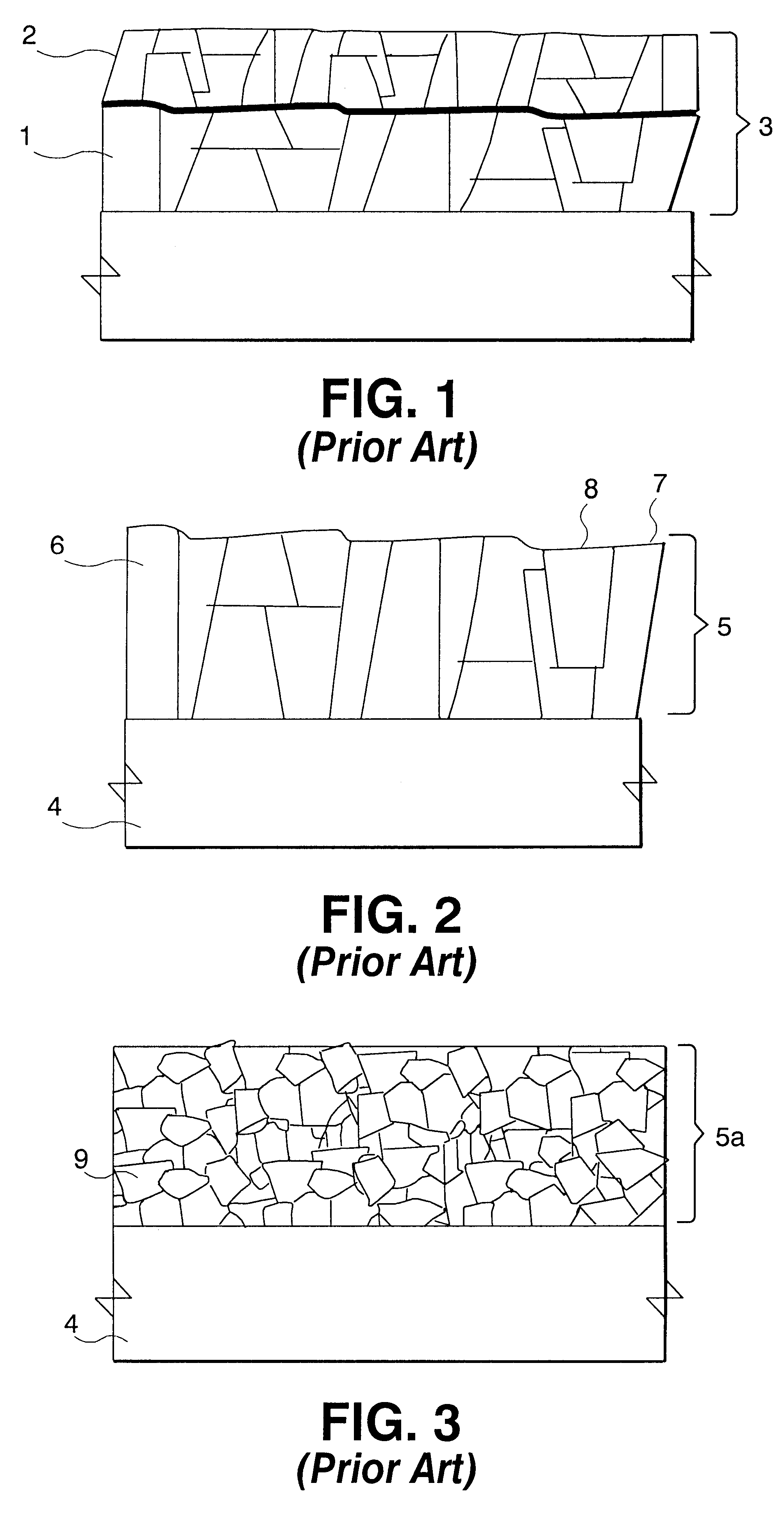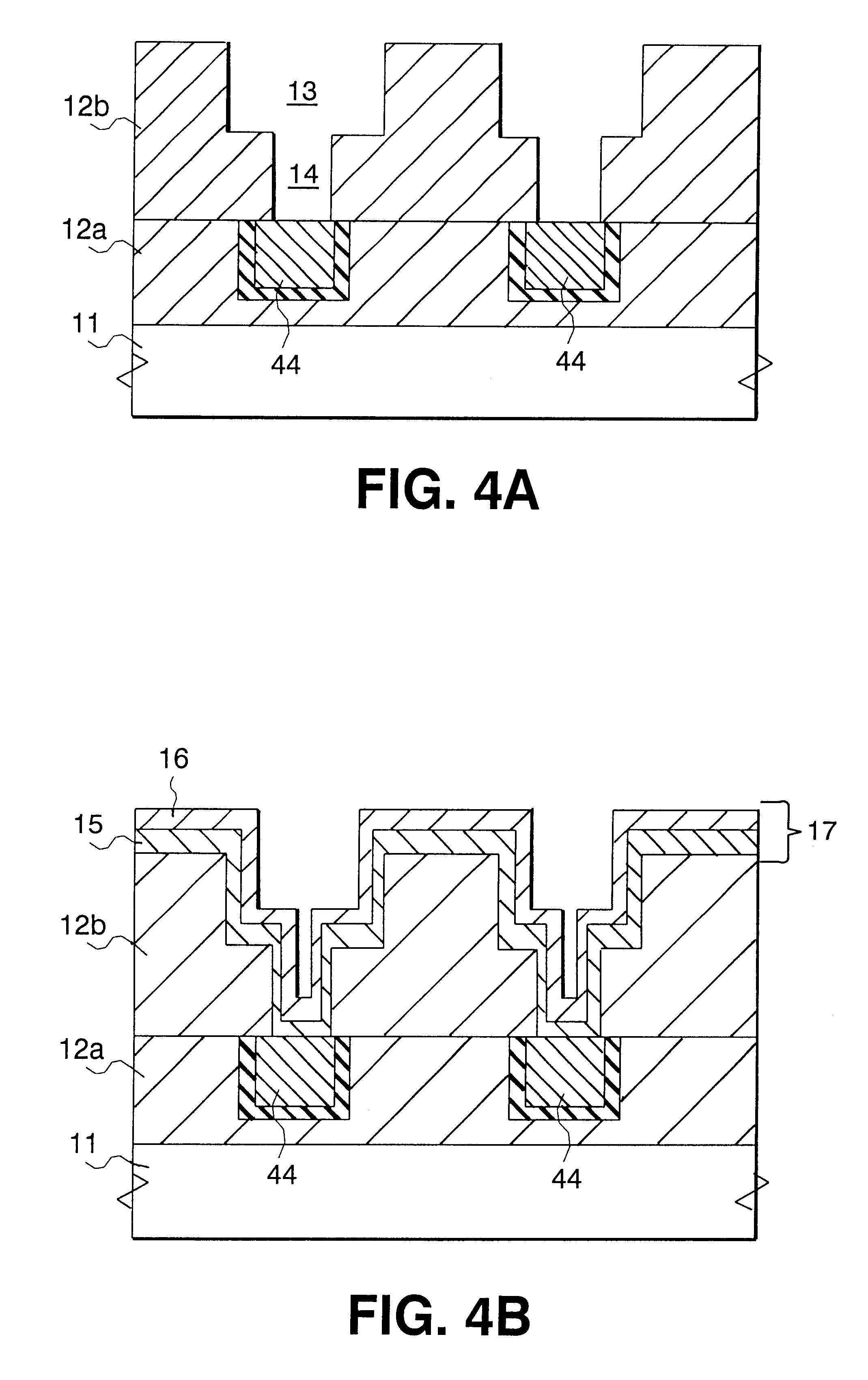Multi-layered wiring layer and method of fabricating the same
a wiring layer and multi-layer technology, applied in the direction of semiconductor devices, semiconductor/solid-state device details, electrical apparatus, etc., can solve the problems of difficult to make diffusion-barrier films, copper is more corrosive than aluminum, and difficult to dry-etch copper
- Summary
- Abstract
- Description
- Claims
- Application Information
AI Technical Summary
Problems solved by technology
Method used
Image
Examples
second example
FIG. 9 shows a relation between a flow rate ratio and resistivity of a film formed by high-pressure RF magnetron sputtering having been explained in the first example, for various RF powers. Herein, the flow rate ratio is defined as a ratio of a volume of argon gas to be introduced into the chamber 21 to a volume of nitrogen gas to be introduced into the chamber 21 (N.sub.2 / (Ar+N.sub.2)).
The relation shown in FIG. 9 was observed when the chamber 21 had a pressure of 13 Pa, the semiconductor substrate 22 was heated at 200 degrees centigrade, the permanent magnets 24 were rotated at 10 r.p.m., and the distance between the metal target 28 and the semiconductor substrate 22 was 134 mm.
As a ratio of N.sub.2 gas in the flow rate ratio N.sub.2 / (Ar+N.sub.2) is increased, the resistivity is once reduced, and thereafter, increased again, regardless the RF power. However, an increase rate of the N.sub.2 gas ratio is dependent on the RF power. The resistivity increases at a lower rate at the ...
third example
The RF magnetron sputtering having been explained in the first example makes it possible to enhance coverage characteristic of a deposited film for covering a recess or hole therewith, by introducing a gas having a higher pressure than usual, specifically, a pressure equal to or greater than 5 Pa, into a chamber. That is, it is possible to form the multi-layered barrier film 17 under desired coverage characteristic by switching RF power with a sputtering pressure being kept equal to or greater than 5 Pa, even when there is carried out dual-damassin process in which the recess 13 and the hole 14 formed at a surface of the second insulating film 12b formed on the semiconductor substrate 11 are concurrently filled with the diffusion-barrier film 17.
fourth example
In the above-mentioned first and second examples, the process in which a multi-layered barrier film is successively formed by switching RF power while the film is being formed is applied to RF magnetron sputtering. This process may be applied to DC magnetron sputtering, as illustrated in FIG. 24, though a N.sub.2 gas ratio and RF power are different from those in the first and second examples.
FIG. 24 illustrates a DC magnetron sputtering apparatus. The apparatus is comprised of a chamber 21, a heater 34 fixed on a bottom of the chamber 21 for heating a semiconductor substrate 22, a target metal 28 fixed to a top of the chamber 21 by means of insulators 29 and a cathode 23, a pump 33 for exhausting air from the chamber 21 such that a pressure in the chamber 21 is in the range of about 1.times.10.sup.-7 Pa to about 1.times.10.sup.-6 Pa, a magnet 42 positioned above the target metal 28, mass flow controllers 31 for adjusting flow rates of argon gas and nitrogen gas, and allowing the ga...
PUM
 Login to View More
Login to View More Abstract
Description
Claims
Application Information
 Login to View More
Login to View More - R&D
- Intellectual Property
- Life Sciences
- Materials
- Tech Scout
- Unparalleled Data Quality
- Higher Quality Content
- 60% Fewer Hallucinations
Browse by: Latest US Patents, China's latest patents, Technical Efficacy Thesaurus, Application Domain, Technology Topic, Popular Technical Reports.
© 2025 PatSnap. All rights reserved.Legal|Privacy policy|Modern Slavery Act Transparency Statement|Sitemap|About US| Contact US: help@patsnap.com



